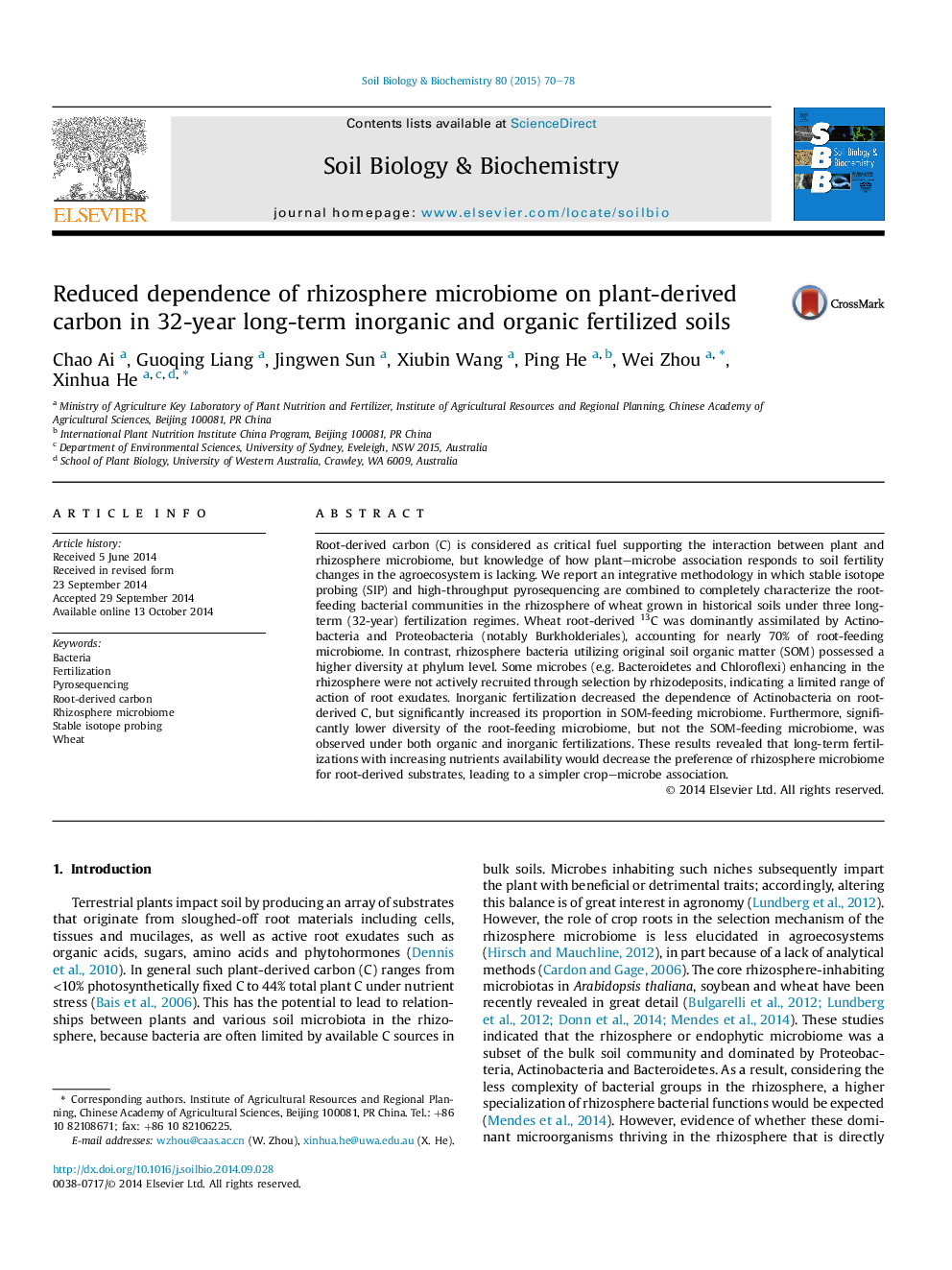| Article ID | Journal | Published Year | Pages | File Type |
|---|---|---|---|---|
| 8364376 | Soil Biology and Biochemistry | 2015 | 9 Pages |
Abstract
Root-derived carbon (C) is considered as critical fuel supporting the interaction between plant and rhizosphere microbiome, but knowledge of how plant-microbe association responds to soil fertility changes in the agroecosystem is lacking. We report an integrative methodology in which stable isotope probing (SIP) and high-throughput pyrosequencing are combined to completely characterize the root-feeding bacterial communities in the rhizosphere of wheat grown in historical soils under three long-term (32-year) fertilization regimes. Wheat root-derived 13C was dominantly assimilated by Actinobacteria and Proteobacteria (notably Burkholderiales), accounting for nearly 70% of root-feeding microbiome. In contrast, rhizosphere bacteria utilizing original soil organic matter (SOM) possessed a higher diversity at phylum level. Some microbes (e.g. Bacteroidetes and Chloroflexi) enhancing in the rhizosphere were not actively recruited through selection by rhizodeposits, indicating a limited range of action of root exudates. Inorganic fertilization decreased the dependence of Actinobacteria on root-derived C, but significantly increased its proportion in SOM-feeding microbiome. Furthermore, significantly lower diversity of the root-feeding microbiome, but not the SOM-feeding microbiome, was observed under both organic and inorganic fertilizations. These results revealed that long-term fertilizations with increasing nutrients availability would decrease the preference of rhizosphere microbiome for root-derived substrates, leading to a simpler crop-microbe association.
Keywords
Related Topics
Life Sciences
Agricultural and Biological Sciences
Soil Science
Authors
Chao Ai, Guoqing Liang, Jingwen Sun, Xiubin Wang, Ping He, Wei Zhou, Xinhua He,
